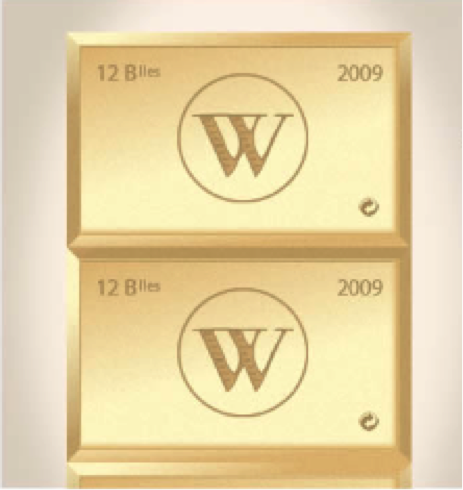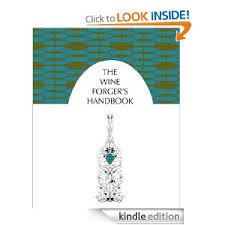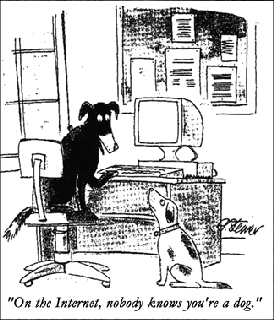by Wine Owners
Posted on 2015-02-10
It’s become apparent over the last few weeks and months that consumers who’ve already been taken advantage of by companies like European Fine Wines (EFW) are being targeted yet again with advance fee frauds and ‘White Knight’ scams.
What’s more, the cold-callers approaching those people who had previously bought from EFW seem to know an awful lot about their prior purchases. We can only presume that the EFW customer base was filched and passed around the London and Bromley wine underworld?
One of our members was approached recently by Rothstein Capital & Partners, who purported to be working in partnership with the receivers of EFW to assist former clients in recovering losses.
On that basis they offered to find buyers for her stock. The prices quoted were well ahead of market levels, for example £14k for her case of 2003 Latour (actual market price £6,500).
They then advised that the case of Latour 2003 she had received in 2013 had been misallocated, and that 'her' case was still held at the Chateau. She was told that she could not sell the case of Latour in her possession, as it did not bear her ‘log number’. She was told that her case needed to be exchanged for the correct case before they could proceed to sell it, and offered to arrange shipping of the 'correct' case from Bordeaux, provided she cover the insurance costs associated with shipping, which would cost £1,000 up front.
As reported in Jim Budd’s excellent resource on wine fraud, Investdrinks Blog, The liquidator, Nedim Ailyan of Abbott Fielding Limited, was understandably scathing of this advance fee fraud and according to Jim Budd of Investdrinks has reported Rothstein Capital to the police.
This isn't an isolated instance reported to us: another member was approached with a similar proposal, requesting that she pay for shipping fees plus a commission fee of £1,500 to get her wine to Hong Kong where it would sell at a premium.
EFW ex-customers are not alone in being targeted.
An elderly gentleman who had bought from Bordeaux Fine Wines previously, was contacted before Christmas with an offer to place wines for sale at auction in Hong Kong, again on the proviso that he pay £2,000 for shipping (and insurance). He was informed by the cold-caller – going by the name of Jay Kingsley - that his case of Montrose 2009 for which he’d paid £3K (at a time when it was worth no more than £1,500) would fetch £7,000 in Hong Kong due to heightened demand ahead of the Chinese New Year.
If you’ve bought from EFW or other cold callers from so-called wine investment companies, watch out for these scams, demand to know how the cold-caller got your information, and do not be taken in. Collect as much information as you can about the caller and their contact details, and report them to Jim Budd. Check the value of your wines on the Wine Owners website, and do let us know.
The bottom line is: if it sounds too good to be true, it will almost certainly be a scam.
by Wine Owners
Posted on 2013-05-03

Wine is a classic collectible asset.
Fine wine differs from stocks and shares in that it does not produce an income and it is not fungible. In this it shares common characteristics with other collectible classes such as art, stamps, coins, cigars and classic cars.
Fungible is another way of saying ‘interchangeable’. Cash is fungible; one £20 note having equivalence with any other note of the same value. Pure gold is also fungible, a gram being interchangeable with any other gram.
In contrast, diamonds are not perfectly fungible because varying cuts, colors, grades, and sizes make it difficult to find many diamonds that are exactly alike. Diamonds illustrate the point that fungibility is not the same as liquidity or scarcity. A global market can nonetheless exist and thrive irrespective of whether an asset class is perfectly fungible or not.
Neither is fine wine perfectly fungible, notwithstanding the contrary views of Joe Roseman, the investment economist who coined the phrase SWAG for Silver, Wine, Art and Gold.
Similarly, typically over time, one case of a particular wine of the same vintage loses its ability to be treated as interchangeable with another, due to variables such as storage location (and implied quality of condition), tax status (held under bond or duty paid), back or strip labels (denoting its original export destination e.g. China) and packaging (e.g. original wooden case or a repack).
Non-fungibility creates market pricing variability. To illustrate the point from another collectible segment, cigars stored at Dunhill in Mayfair are thought to carry a premium at auction houses; such is the excellent reputation of their humidor.
The growing globalisation of the fine wine market over the last decade, with the opening up of the Far East and Russian markets, and the future potential influence of Brazil, India and other emerging regions, has shone a spotlight on the importance of wine provenance – being the term used to describe history and current condition.
The question of how good is a wine’s provenance arises directly from the fact that wine is not fungible. The top estates (typified by the Bordeaux First Growths) are gradually adopting technological innovations that could help in future. Everyone agrees that provenance can only become increasingly important.
Where the wine is stored, how long it’s been kept there undisturbed, where it’s been and the distance it’s had to travel; are all more pertinent questions than ever before.
A new system of building and tracking provenance is surely needed, where older stocks can be traced back, through transfer of title, movements, location changes and inspections.
Traceability and reliability of source will increasingly justify higher prices for the best stock, and lead to a disparity of value or market liquidity between two bottles or cases of the same wine.
There is already a widening gap between older wines sourced direct from the producer compared with secondary market stocks in those cases where history cannot be proved.
It is well worth the investment in time to seek out secondary market stock with good provenance, in order to assure your fine wine purchases can serve as an effective store of value. Greater market transparency is surely the key to giving private buyers the confidence and information they need.
by Wine Owners
Posted on 2013-04-04
Fine wine is a multi-million dollar industry and is fraught with peril. From fake bottles to fraudulent contents, from mislabelled wine to misled consumers, wine has been faked, forged, and used for fraud for as long as it has been consumed.
This eBook provides a brief history of forgery and fraud in the fine wine world, including case studies on Rudy Kurniawan and Hardy Rodenstock, and is available from Amazon for just £1.53, or free to borrow and read on the Kindle for 'Prime' users.

The Wine Forger’s Handbook also functions as a guide, both on how fraudsters have been found out, and tips on how to avoid being fooled in your own wine purchases.
Written by a pair of award-winning writers, wine expert Stuart George and best-selling art crime expert Dr. Noah Charney, The Wine Forger’s Handbook is a fun, informative, engaging read, and one which could potentially save you from making costly purchases of fake wine.
The Wine Forger’s Handbook is ideal for anyone from wine collectors to casual drinkers, or those who enjoy true crime stories of forgery, deception, and detection set against the vivid backdrop of the world of wine.
ABOUT THE AUTHORS
Noah Charney
Noah Charney is a professor of art history specialising in art crime and a best-selling author of fiction and non-fiction.
His books include the international best-seller novel The Art Thief; the best-selling Stealing the Mystic Lamb: The True Story of the World’s Most Coveted Masterpiece; The Thefts of the Mona Lisa: On Stealing the World’s Most Famous Painting; and the guidebook series Museum Time. He is editor of Art & Crime: Exploring the Dark Side of the Art World and editor-in-chief of The Journal of Art Crime, the first peer-reviewed academic journal in its field.
He is the founder of ARCA, the Association for Research into Crimes against Art, an international non-profit research group on art crime and cultural heritage protection (http://www.artcrimeresearch.org/). He teaches art history and art crime on the ARCA Postgraduate Certificate Program in Art Crime and Cultural Heritage Protection at American University of Rome and for Brown University.
He is a popular speaker and recently gave a TED talk on art crime, which can be viewed at http://www.youtube.com/watch?v=T897Foh5s0g. He is an award-winning columnist for numerous magazines, with regular columns in The Daily Beast (http://www.thedailybeast.com/features/how-i-write.html), Tendencias del Mercado del Arte, and ArtInfo (http://blogs.artinfo.com/secrethistoryofart/).
He encourages readers to join him on Facebook (https://www.facebook.com/NoahCharney) or through his website http://www.noahcharney.com/.
Stuart George
Stuart George is an independent wine consultant in London.
In 2003 he was awarded the UK Young Wine Writer of the Year. Stuart was co-author of The Wine Box (2005), picture editor and leading contributor to 1001 Wines You Must Try Before You Die (2008), and editor of the award-winning The Finest Wines of Tuscany and Central Italy(2009) and The Finest Wines of Champagne (2009).
Stuart has contributed to publications on five continents, including The Daily Telegraph, Fine Wine International, Fine Wine & Liquor, Meininger’s Wine Business Monthly, Sommelier Journal, The Tasting Panel Magazine and the Times Literary Supplement.
He is a sought-after show judge and has been a jury member at wine competitions in Austria, Brazil, Chile, China, France, Luxembourg, Portugal and Spain. He has worked harvests in France, Italy and Australia.
His website and blog is at http://www.StuartGeorge.net/. He can be followed on Twitter at @sdgeorge1974.
by Wine Owners
Posted on 2012-03-05
Decanter reported this week that an alleged wine fraudster, Rudy Kurniawan, has been arrested in the USA after indefatigable efforts by Laurent Ponsot of the great, eponymous Burgundy estate.
Ponsot's efforts were aided by European sommeliers who were able to confirm the names of people who had approached them, and paid for, empty wine bottles. The idea that trade in illicit fine wine is abetted by professionals whose careers are often driven out of personal passion was an initial shock. It's all too easy of course, offering bribes to relatively poorly paid restaurant workers in the knowledge that the cost of acquiring empty bottles and carefully drawn corks to be reused and resealed is a bagatelle compared to the returns at auction of increasingly rare, ageing wine stocks.The problem is significant enough for Ponsot to assert that 80% of pre 1980 Burgundy sold at auction is counterfeit.I do hope not, as I think back to an Averys bottling of 1934 Amoureuses that was particularly ethereal, combining sweetness, silkiness and surprising intensity of flavour. But then, that's hardly the sort of bottling that your average global fine wine fraudster would select for maximising returns. In a world driven by brand, elite producer names are the inevitable target.
And whatever the percentage, there's no doubt that the risks of coming across fake wine is increasing, making it more important than ever to insist on photography for great names pre-2000, inspection, and where provenance is not impeccable, to either pass or recognise the risk that you may be running.
There are some precautions that stop well short of being foolproof. Look for capsule tampering, capsules and labels that look too clean and unusually high fill levels. Once the bottle has been opened, check for incorrect vintage stamps, unusual depth of colour, an unexpectedly young taste or a wine that hasn't thrown any kind of sediment. However, this cannot be the answer.
A new system of provenance is surely needed, where older stocks can be traced back, at least some of the way, through transfer of title, movements, location and inspections.
Traceability and reliability of source will increasingly justify much higher prices for the best stock, and lead to a greater disparity of value between two bottles of the same wine. We are already seeing the gap widening between direct from producer, ex cellars or chateau older wines, and secondary market sources whose history is opaque. It is well worth the investment in time and good discrimination to buy secondary market stock with good provenance. Education on informed buying is urgently needed.
by Wine Owners
Posted on 2012-03-05
Check out Jim Budd's excellent blog and site, who has been leading the good fight against disreputable and financially risky traders for many years.
The message is loud and clear when looking to invest in wine:
- Stick to established sources, especially when buying futures
- Use pricing tools such as Wine Searcher to establish fair market value based on a known range of selling prices if in any doubt
- Report suspicious cold calls and hard selling to Jim.

I've met intelligent people who have invested in wine futures and lost considerable amounts of money. Basic checks and following Jim's advice is as good a way as any to ensure many, many years of happy drinking and fine wine appreciation.

